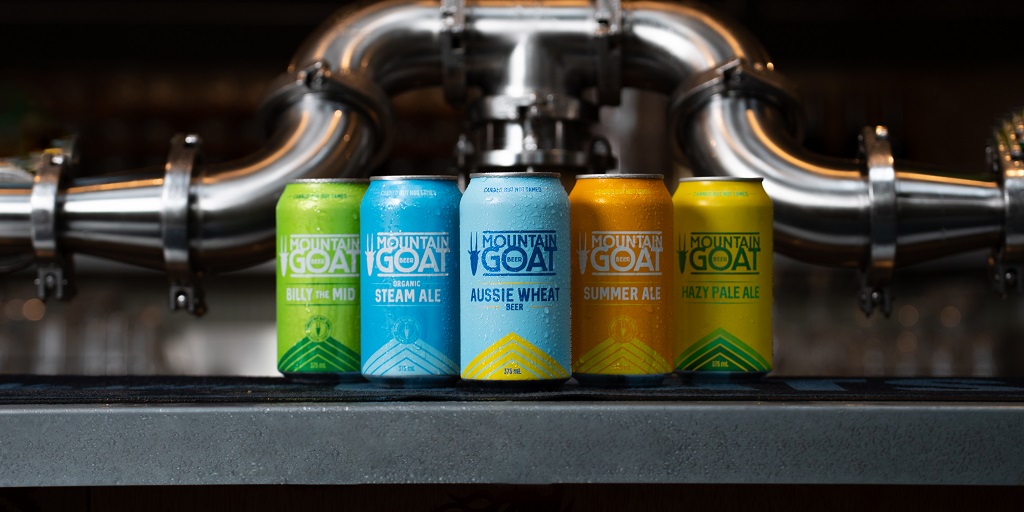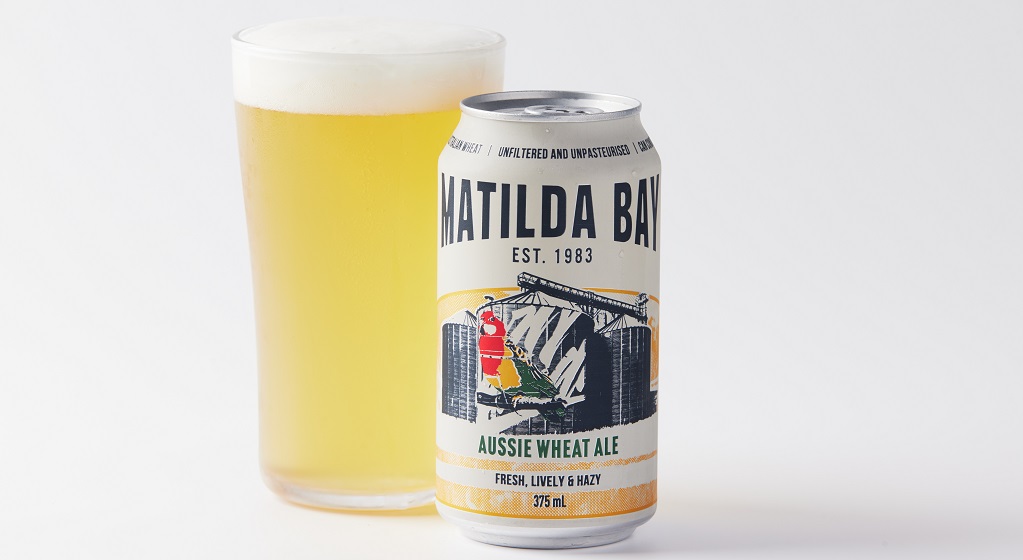
Endeavour Group teams up with CUB for new beer style

Endeavour Group has collaborated with Carlton & United Breweries’ innovation arm Fire + Earth Ventures to develop what it says is “the country’s newest beer style”, the Australian Wheat Ale.
Fire + Earth Ventures is the rebranded ZX Ventures Company, associated with AB InBev prior to the sale of CUB to Asahi Beverages and it has teamed up with Endeavour Group’s Beer Merchandise team to collaborate on the development of the beer.
A media statement said the Aussie Wheat Ale was the “brainchild of leading Australian brewers and beer experts who felt Aussies deserved a beer style they could truly call their own”.
Versions of the style have been developed by Matilda Bay,Mountain Goat,Pirate Life,4 PinesandGreen Beacon Brewing Coas a result of the partnership.
“We are constantly looking to innovate to meet the changing needs of customers, which is why we are always interested in collaborating and partnering with suppliers to ensure our customers have access to products we think they will love,” an Endeavour spokesperson told Brews News.
This focus on new product development has been key to Endeavour’s growth. Group CEO Steve Donohue told a supplier forum earlier this year that 40 per cent of the products that the company currently retails did not exist eight years ago.
In the last five years alone, he said, 85 percent of sales growth for the company has come from New Product Development (NPD). Its development arm Pinnacle Drinks has contributed $1.3 billion to YTD company revenues.
The development of a new style
The Aussie Wheat Beer will showcase Australian ingredients, CUB said, and is not merely a riff off a traditional wheat beer.
“Most Australian beer uses barley as the dominant ingredient. Substituting a proportion of barley with premium wheat malt grown right here under the Aussie sun gives this new beer a soft fluffy head with subtle aroma, delicate malt sweet taste and bright haze that glows like sunlight in the glass,” a media release gushed.
The Australian Wheat Beer, instead of using a traditional Belgian or German yeast style it uses a “neutral, clean-fermenting yeast” along with Australian malt from suppliers including Barrett Burston Malting and the Eclipse hop, which was launched in 2020 by Hop Products Australia and has since gone from strength to strength.
Matilda Bay’s Phil Sexton, godfather of the Australian craft beer industry, helped develop the style, having worked on wheat beers such as the iconic Redback in the 1980s, a wheat beer in the traditional German hefeweizen style.
Redback was recently revamped under the stewardship of Phil’s son and Matilda Bay head brewer Harry Sexton, dialling back some of the more prominent aspects of a wheat beer.
Phil describes Matilda Bay’s Aussie Wheat Ale as somewhere between “a Pacific ale style and a Redback”.
“There’s a little bit of baggage with traditional wheat beers. Some people think of wheat beer as a heavy flavour and that doesn’t necessarily fit our Australian lifestyle and climate,” Sexton said in the media release.
“Aussie Wheat Ale is unlike anything that you might’ve tried in the past. It’s a beer style that Australians can call their own, knowing that they’ll be supporting our farmers while enjoying a refreshing and modern Aussie beer.”
Aussie Wheat Ales by Matilda Bay, Mountain Goat and Pirate Life are available now at Dan Murphy’s and BWS stores nation-wide, while 4 Pines will release its Aussie Wheat Ale in August.
Green Beacon’s Mollyhawk Aussie Wheat Ale is only available in NSW and QLD stores.

Everything old is new?
Wheat beers were discussed in depth at one of the major panels at the WA Brewers Association’s WA Beer & Brewing Conference in the past week, ‘Is Everything Old New Again?’.
Panellist Brendan Varis, founder of Feral Brewing Co. suggested that at the time of the launch of Feral White – an interpretation of a Belgian witbier – there were only approximately three wheat beers available in Australia.
“There wasn’t really any historical understanding about those beers. But there was about wheat beers,” Varis suggested.
“People knew that Germans drank them, they’d been to Oktoberfest and had the big frothy glass and so there was an understanding there, and you could reintroduce a small portion of people that knew about it to what they had previously experienced.”
Feral Brewing’s Feral White was historically the brewery’s best-selling beer, before Hop Hog came along and Varis said the decision to move away from wheat beer was fully consumer-driven.
The brewers discussed the idea that breweries could make any type of beer they desired, but ultimately it was the customer that chose which beers would become commercially viable and remain in a core range.
“The wheat beer market, the wheat beer drinker too, is a weird section of craft beer drinkers. They seem to be permanently there and they never drink any more or any less,” said Sean Symons, founder and head brewer at White Lakes Brewing.
“It’s such a polarising style but for most people it’s just too much, too extreme. I think the biggest curse in the world is to win the AIBAs with a wheat beer… because you can’t market it.”
As attempts to bring back the wheat ale have shown, brewers are constantly innovating and taking older styles as inspiration. But there are cost and consumer considerations when bringing back these traditional styles.
“A difficult thing for breweries as we move forward into the next sort of decade is the cost to get to market for different styles… it’s okay to create all this different stuff, but getting something to stick is a real challenge, particularly in the retail space,” said Symons.
It has also been the case that historically, major brewers would dilute the traditional beer styles to make them more palatable to a wider audience, which could impact consumer perceptions of the versions being made by smaller brewers.
“One of the things that I remember is studying the early, larger, lager breweries was that they just wanted to make something clean and drinkable. And it was that cleanness that they often looked at and that meant removing a lot of flavour and complications of the beer,” Brian Fitzgerald of Belgian-style brewers Artisan Brewing told the panel.
“So it was something that was easy drinking and something you could drink a lot of. So we saw ABVs come down and more adjuncts being used, to increase that drinkability. But I like the return to standard lagers now, full malt lagers, which are a really exciting space.”
The panellists suggested that smaller, emerging brewers had to first differentiate themselves from the major brewers before they could return to styles such as lagers which were previously the province of those larger breweries.
“Craft had to establish itself as this different thing and a higher quality thing before coming back to lagers I think, and because they are more difficult to make I think if we had ever gone out trying to make lagers against the big guys, craft would never become anything,” Symons reasoned.
Fitzgerald highlighted the recent World Beer Cup, in which a number of Australian brewers were honoured, that there were a notable number of ‘older’ styles, such as the German Pilsner, barrel-aged strong stout, and an international pilsner which made the top six most-entered categories.
“Historically beer styles were what they were and tasted the way they were out of necessity, whether it was a type of water, so you’re not going to try and make lager in the UK with your Burton type water. But then they learned how to make them stable,” explained Brendan Varis.
When asked whether we should be innovating new styles or looking back to old recipes, Varis said it has to be both.
“[We’ve got to] look back, but also see what’s available, what new tools, whether it be ingredients or technology, are available. But certainly there’s tens or thousands of years worth of brewing history there, which would be somewhat foolish to just disregard.”



